Established for over 25 years
Clinics Nationwide
5 Star Google & Trustpilot Reviews
Exploring the Truth: Does Scalp Micropigmentation Damage Hair Follicles?

Reading time: 8 min
Does scalp micropigmentation damage hair follicles? This concern is at the forefront for those considering SMP to address hair loss. Our article provides a clear, expert-backed analysis of SMP’s effects on your scalp’s health. Join us as we unpack the truth behind the technique and offer insight into selecting the right practitioner for peace of mind and optimal results.
Table of Content
The treatment is precisely crafted to preserve the integrity of your follicles, ensuring it doesn’t hinder existing hair growth. This non-surgical treatment inflicts minimal to no harm on existing hair follicles, asserting SMP as a safe and viable solution for men and women battling hair loss.
The treatment is precisely crafted to preserve the integrity of your follicles, ensuring it doesn’t hinder existing hair growth. This non-invasive treatment inflicts minimal to no harm on existing hair follicles, asserting SMP as a safe and viable solution for individuals battling hair loss.
Understanding the SMP Technique
Scalp Micropigmentation (SMP), also sometimes referred to as hair tattooing, or scalp tattooing, involves the use of a fine needle and specialised pigments to mimic the appearance of hair follicles on the scalp. This process is distinct from traditional tattooing as it targets the upper dermis layer of the skin, whereas in traditional tattooing the ink is inserted deeper into the dermal layer. The pigment used is specially designed so as not to affect the hair’s natural growth cycle.

Image showing the different skin layers
The Importance of Qualified Practitioners
The selection of a suitable practitioner can significantly impact your SMP experience. Qualified SMP practitioners:
- Hold memberships in professional associations like the British Association of Hair Restoration Surgery (BAHRS), indicating recognized expertise in the field
- Abide by a rigorous Code of Conduct
- Undergo extensive training, inclusive of first aid and bloodborne pathogen courses, to fulfill the professional standards set by associations such as BAHRS
Peer validation forms a crucial element of the process. References from surgeon members of BAHRS act as safeguards to prevent unqualified individuals from carrying out the procedure. Additionally, SMP practitioners are expected to continually develop their professional skills. They are required to interact with other professionals to keep abreast of the latest developments in hair loss and restoration techniques.
Despite the surge of misinformation, it remains a fact that SMP does not disrupt the natural hair growth cycle, encompassing the Anagen, Catagen, and Telogen phases. It neither impedes natural hair regrowth during any of these phases nor does it interfere with future hair growth in the treated areas.
Indeed, SMP treatments are crafted to work harmoniously with natural hair, maintaining its integrity while improving the look of thinning or balding areas. But could SMP stimulate new hair growth? Let’s explore this further.
Will SMP Affect My Existing Hair?
Preserving the safety of your existing hair is paramount during SMP procedures. Technicians use techniques designed to work around natural hair, ensuring its preservation. Even if your hair is long, SMP can be performed without the need to shave your hair.
Moreover, SMP can be specifically targeted in areas where hair thinning or balding is most noticeable. This strategy aids in maintaining the integrity of existing hair while creating a fuller, denser-looking head of hair.
Can SMP Promote New Hair Growth?
Although SMP gives the illusion of a fuller head of hair, its primary purpose is aesthetic. It does not activate dormant hair follicles or stimulate the biological process of hair growth. The treatment’s effects are purely cosmetic, offering visual enhancement without promoting new hair growth.
Therefore, while SMP may not promote hair growth, it drastically improves the scalp’s appearance, instilling a renewed sense of confidence in those dealing with hair loss.
Maintaining Your SMP Look
After undergoing SMP treatment, it’s vital to follow aftercare instructions to preserve its appearance. Shielding the scalp from direct sunlight using a high-quality sunscreen is crucial to ward off fading.
Proper aftercare and required touch-ups can help you maintain your SMP look for numerous years. But, when should you contemplate a touch-up?
Check out Scalp Micropigmentation Fading: A Comprehensive Guide for more tips on how to reduce premature fading
Touch-up Treatments: When and Why?
Touch-up treatments are essential for maintaining the colour’s intensity and the hairline’s natural appearance, particularly if the pigmentation’s lightening or fading becomes evident. The frequency of required touch-ups can differ for each person.
Studies indicate high satisfaction levels among individuals who have undergone SMP treatments, with slight fading noted over a period ranging from 7 to 32 months.
The adaptability of SMP extends beyond being just a standalone treatment. It can be paired with other hair loss solutions to offer a combined approach to combatting hair loss. Prescribed hair restoration medications, like Minoxidil can function as usual post SMP treatment, and hair growth instigated by these treatments can continue unaffected. Moreover, undergoing a hair transplant after scalp micropigmentation is entirely feasible, although it is generally advised to wait for at least six months before opting for a hair transplant after SMP.
A pivotal factor in amalgamating SMP with other treatments is the clinic’s proficiency. Clinics housing certified experts can deliver top-tier service when SMP is fused with other treatments, given their expertise in advising on pigment colour selection and hairline placement.
Therefore, while SMP requires touch-ups to maintain its initial appearance, it offers a highly practical and long-lasting solution for individuals seeking to address hair loss with minimal invasiveness, and maintenance compared to other options.
Post-Hair Transplant SMP
For individuals who have received a hair transplant, SMP can serve as an optimal supplementary treatment. It boosts the perception of density, simulating the presence of additional hair follicles. This procedure simulates thousands of shaved hair follicles, which can enhance the appearance of thinning hair.
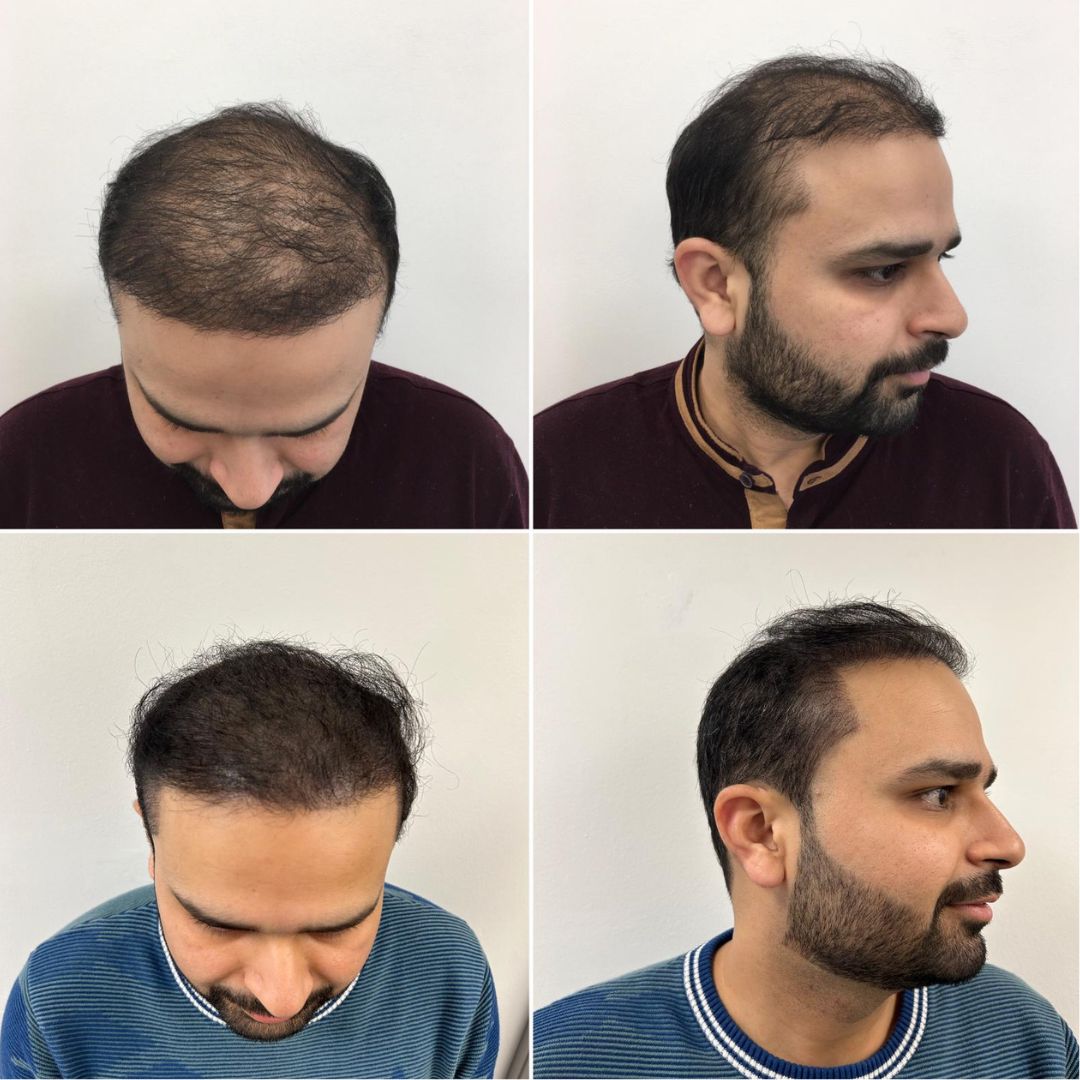
An FTG Clinics client who has had Scalp Micropigmentation to add density after a hair transplant
Additionally, SMP treatment can proficiently conceal surgical scars from previous procedures like hair transplants. This twofold advantage positions SMP as a favoured choice for those aiming to optimize their hair transplant results.
SMP as a Standalone Solution
While SMP pairs well with other treatments, it merits mention that it can function as an effective treatment on its own. For individuals grappling with hair thinning, receding hairlines, or baldness, SMP can deliver substantial aesthetic enhancements, instilling a renewed sense of confidence.
As with any cosmetic procedure, SMP does carry potential side effects. Common ones encompass:
- Redness
- Itchiness
- Dryness
- Temporary loss of sensation in the treated area
Fortunately, most people experience minimal to no side effects from SMP.
Nonetheless, severe side effects can occur, including allergic reactions, especially in individuals with sensitive skin or those with a known history of allergies to pigments or metals. Minimizing these risks primarily involves selecting the right clinic and adhering to aftercare best practices.
Selecting the Right Clinic
Choosing the appropriate clinic is vital for a successful SMP experience and to minimize potential side effects.
When choosing a clinic, consider the following factors:
- Assess the practitioners’ expertise, their track record, and their methodology for selecting pigments.
- Look for a clinic’s portfolio, showcasing a spectrum of SMP results on clients with diverse hair loss conditions, complemented by positive testimonials.
- Bear in mind that decisions made merely based on price or convenience could result in disappointing outcomes or, worse, complications.
Ensure that the SMP clinic follows sterile procedures to avert infections and establish a secure treatment environment.
Aftercare Best Practices
Aftercare constitutes a crucial component in the success of SMP treatment and managing side effects. For initial healing, clients should:
- Refrain from washing the scalp for the first five days after treatment
- Steer clear of activities that could result in excessive sweating
- Avoid exposing the scalp to direct sunlight
- Avoid touching the scalp with unclean hands.
Post the initial recovery period, clients should slowly resume their routine hygiene practices, including:
- Safeguarding the skin from UV rays with a high-SPF sunscreen after the third day
- Postponing intense exercise and visits to saunas, steam rooms, and swimming pools until after 30 days.
Summary
To sum it all up, SMP is a safe, effective solution for hair loss. It does not harm hair follicles and does not interfere with natural hair growth. The safety and success of the procedure heavily rely on the skill and expertise of the practitioner. SMP can be a standalone solution or combined with other treatments like hair transplants. With proper aftercare the results of SMP can last for several years until a top-up is required.
Do people regret SMP?
Some people do report having scalp micropigmentation regrets, often due to factors like lack of research, misleading information from clinics, or choosing the wrong procedure. It's important to carefully consider these aspects before undergoing SMP.
Can Scalp Micropigmentation Be Removed?
Individuals might seek Scalp Micropigmentation (SMP) removal for various reasons, such as dissatisfaction with the initial treatment, changes in preference, or the need to adjust to further hair loss.
There are two primary options for SMP removal:
- Laser Removal:
This is the most effective method, particularly for extensive botched Scalp Micropigmentation treatments or serious corrections. It works by targeting the SMP pigments with laser energy, breaking them down for natural elimination by the body. This process typically requires multiple sessions and can be uncomfortable, sometimes leaving a slight residue in cases of deeply injected pigments.
- Saline Solutions:
Suitable for smaller adjustments, such as fine-tuning the hairline or addressing minor areas of progressed hair loss. This less invasive method draws out the pigments and can be a viable option for those seeking a gentler approach.
Do I Have To Shave My Hair Before SMP?
Whether it is recommended to shave your hair or not will depend on the type of treatment you are looking for and what can be achieved with your existing hair. For example, if you are looking for SMP For density boosting and have sufficient hair to ‘add’ density to then no, you do not need to shave your hair. If you are looking to lower, re-define or augment a hair line then the hair must be worn shaven for a natural result.


Article author Dawn Forshaw — Published on 29th February 2024
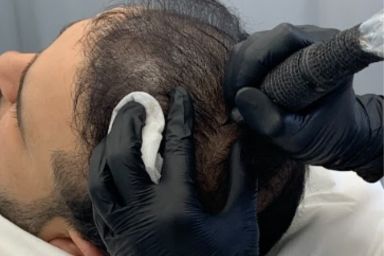
Combining Scalp Micropigmentation and Hair Transplants: The Ultimate Hair Loss Solution

Eyebrow Hair Loss Demystified: Uncovering Causes and Pursuing Solutions
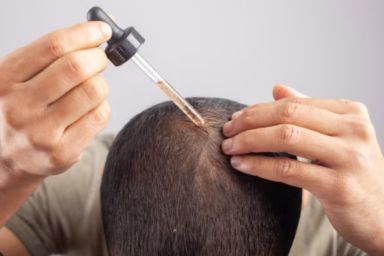
Can You Use Minoxidil with Scalp Micropigmentation?

Female Temple Hair Loss: Causes, Prevention & Treatment
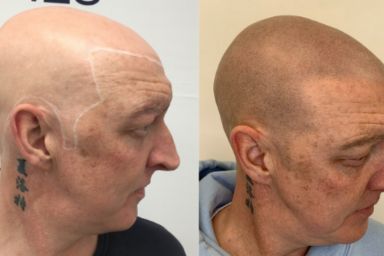
Paul's Transformation: Navigating Alopecia Universalis with Eyebrow & Scalp Micropigmentation
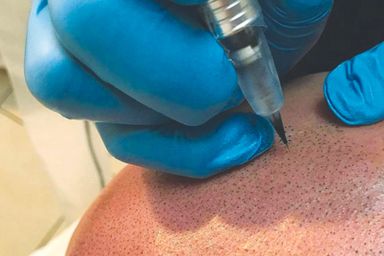
Scalp Micropigmentation Fading: A Comprehensive Guide

Is Scalp Micropigmentation Permanent?

Celebrities with Scalp Micropigmentation

Scalp Micropigmentation Aftercare: A Comprehensive Guide
- Choosing a selection results in a full page refresh.
- Press the space key then arrow keys to make a selection.

